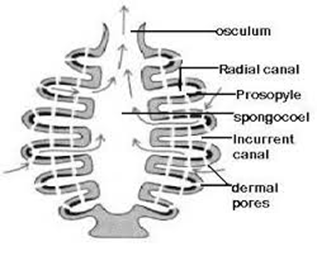Hatch and Slack pathway or C4 cycle
Hatch and Slack Pathway / C4 Cycle
Process -
- The primary acceptor of carbon dioxide in C4 cycle plants is phosphoenol pyruvic acid (PEP). It accepts carbon dioxide and forms oxaloacetic acid (OAA).
- OAA is the first stable product which is having four-carbon dicarboxylic acid. The reaction is catalyzed by PEP carboxylase. This is called beta carboxylation . This takes place in the mesophyll cell.
- OAA is reduced to malic acid. The electron necessary for this reduction is supplied by NADPH. The enzyme malic dehydrogenase catalyzes the reduction.
- The carboxylation of PEP and reduction of OAA takes place within the mesophyll cell.
- Malic acid moves into bundle of sheath cells through plasmodesmata.
- Within the bundle sheath cell Malic acid oxidatively decarboxylated into pyruvic acid.
- The enzyme " malic enzyme "catalyze this decarboxylation. Carbon dioxide released in this reaction is accepted by RUBP. Carbon dioxide is fixed in the C3 cycle.
- The electron released in the oxidative decarboxylation of Malic acid is accepted by NADP which is reduced to NADPH.
- Pyruvic acid synthesized in the bundle of sheath cells moves into a mesophyll cell.
- In the mesophyll cell, the pyruvic acid is phosphorylated to regenerate PEP. The enzyme pyruvic dikinase catalyzes the reaction. Two molecules of ATP are utilized in this reaction.
citric acid cycle



Comments
Post a Comment